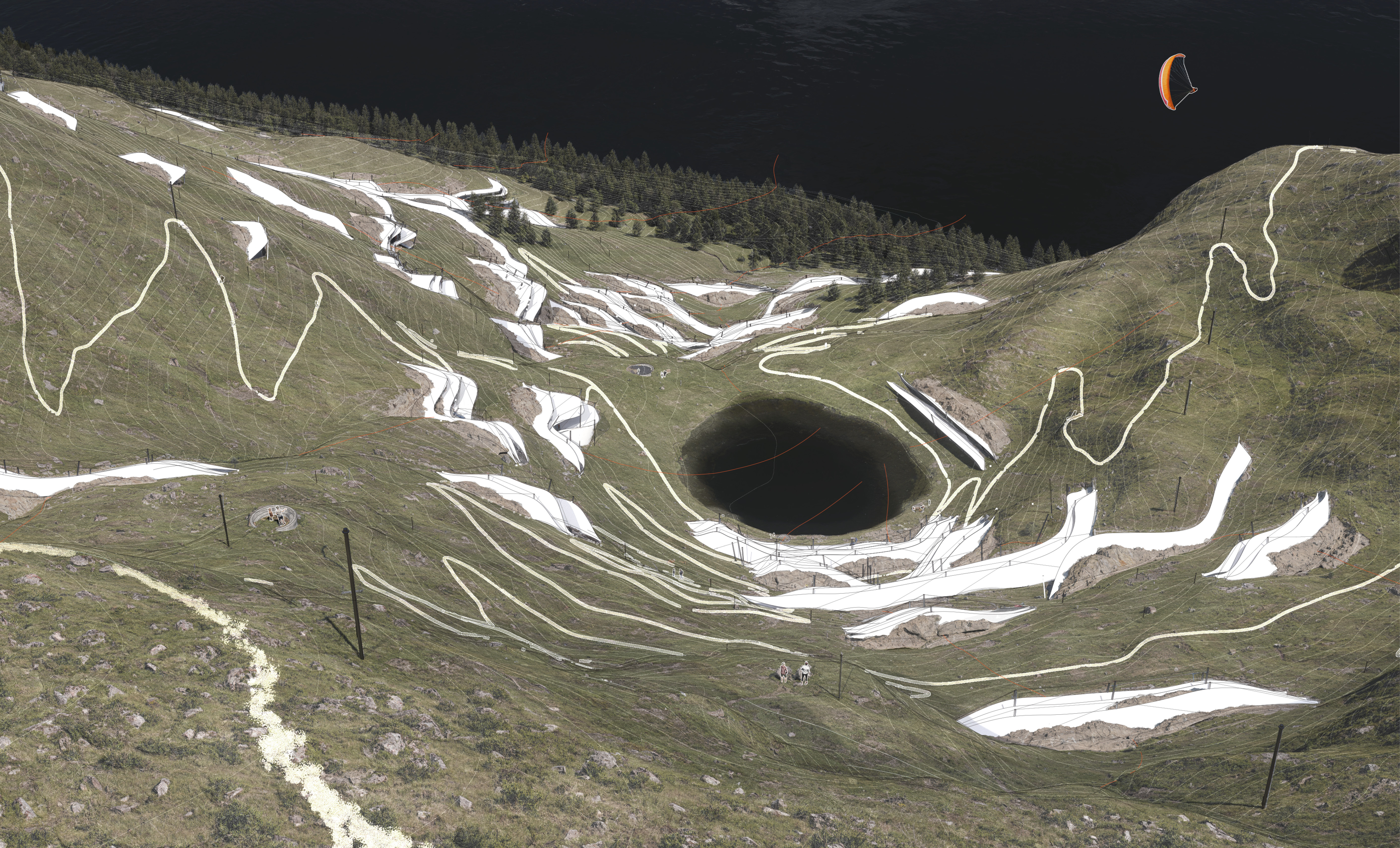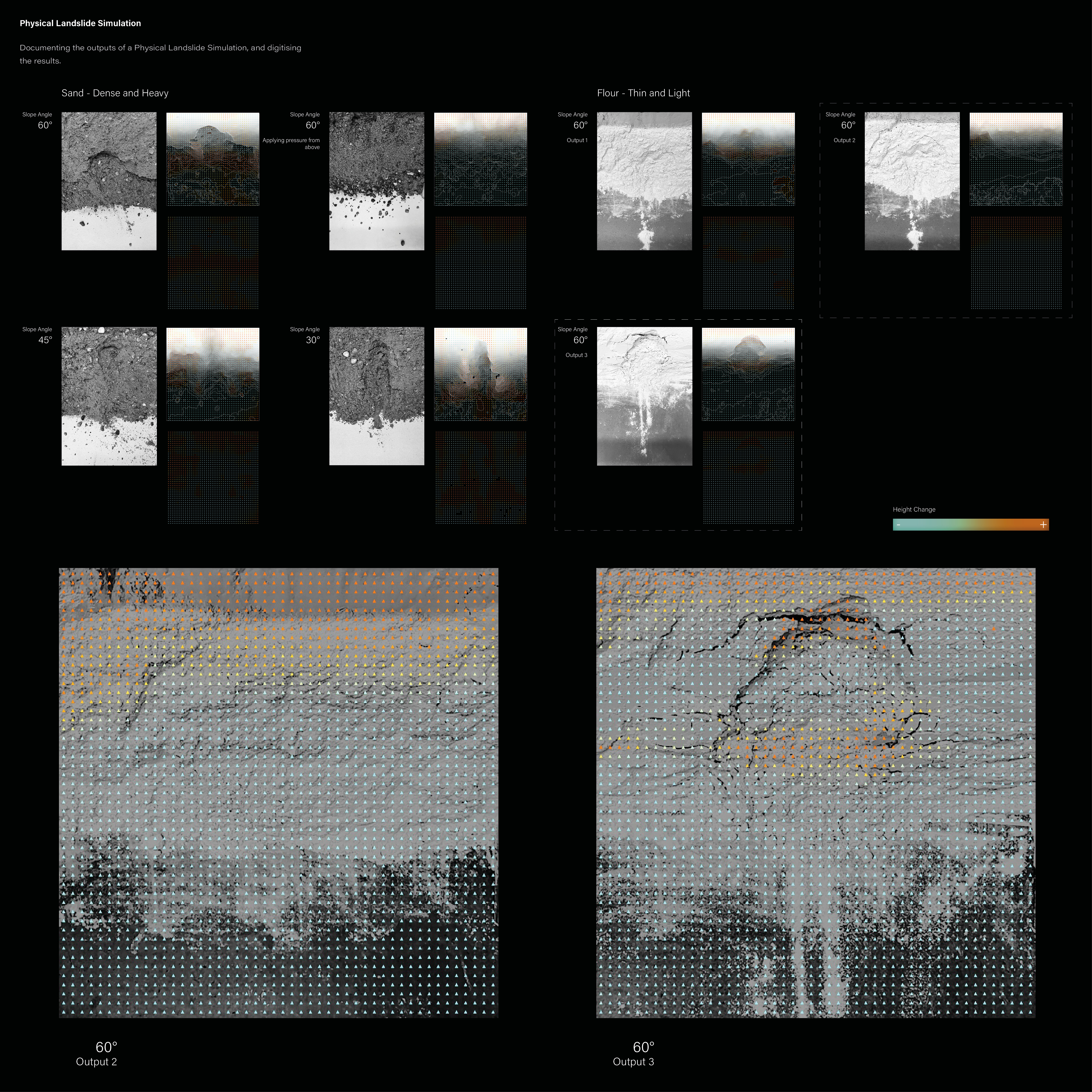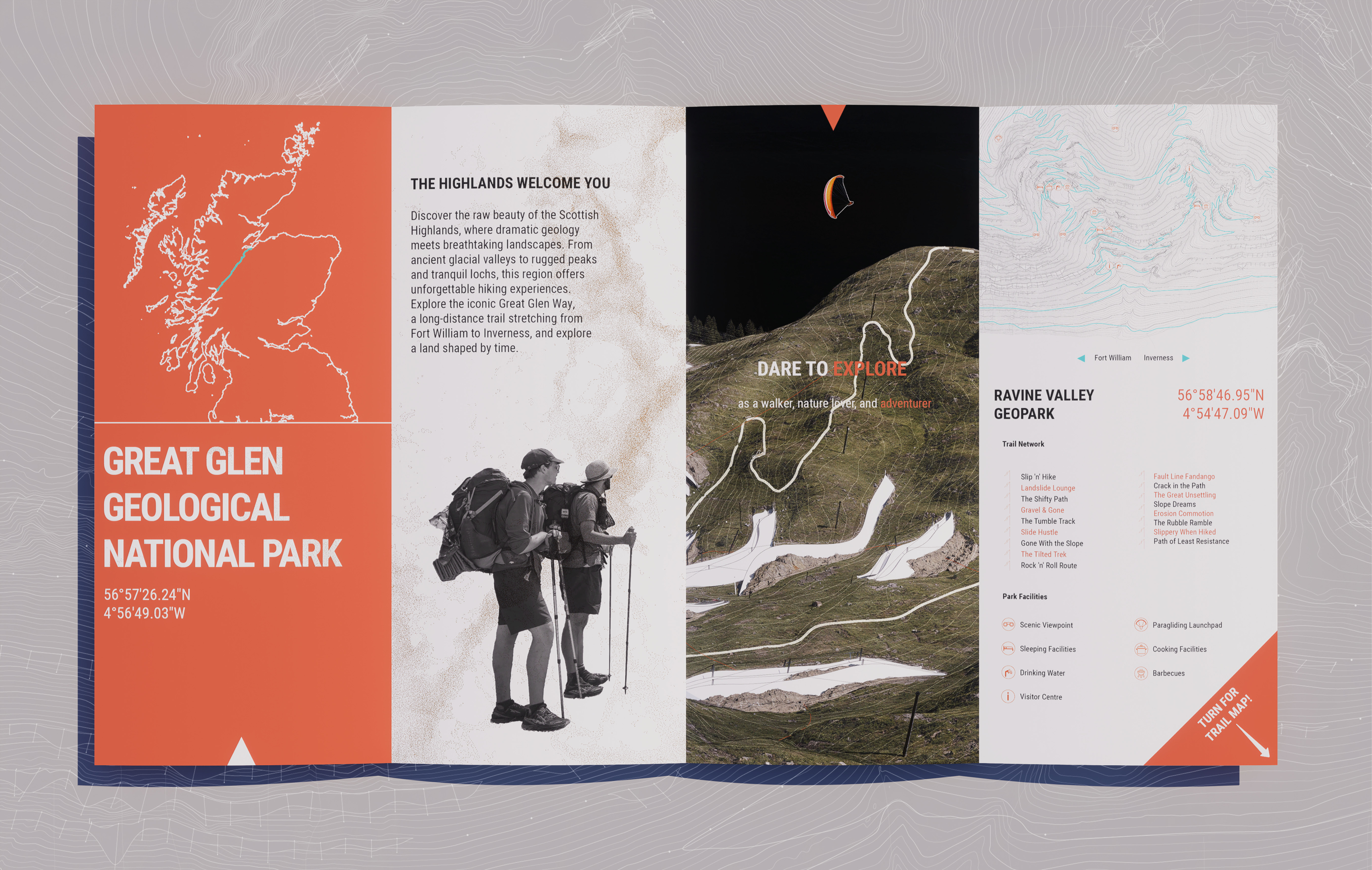Edoardo Ripamonti
Year 1 MArch
Great Glen Geological National Park
Landslide-Responsive Hiking Infrastructure
Great Glen Fault, Scottish Highlands, Scotland
With increasing rainfall and temperature extremes, landslides, rockfalls and slope erosion now threaten the Great Glen’s roads, rails and trails. This project reframes the 117-kilometre Great Glen Way as both hiking experience and living defence, deploying a series of strategically placed lightweight interventions that read and react to the fault’s unstable terrain.
Each station combines a tensile frame with armoured ribs that welcome the very debris they guard against: soil, scree and fractured schist are caught, settle and gradually bury the structure, turning agents of erosion into layers of insulation and camouflage. Shaped through computational fluid-dynamics simulations, parametric processing and LiDAR-based landscape analysis, every module adapts to its local slope, run-out distance and potential landslip velocity.
The shelters serve hikers, geologists and rescue teams alike. Way-finding stations double as data loggers, drone platforms oversee inaccessible scarps, and education hubs host slope-stability workshops before becoming emergency coordination points. By mediating between human use and shifting ground, the Great Glen Geological National Park positions architecture as an evolving buffer, archive and lookout for Scotland’s dynamic Highlands.











︎︎︎ Home
︎︎︎ Previous // Next ︎︎︎